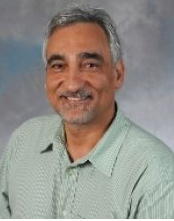 Director and PI: George Christou Role of the Director: Overseeing center progress in all aspects, making decisions with input from the Science Director, the Management Committee, Thrust leaders, the Consulting Scientist, and the External Advisory Committee when needed, and communicating with DOE. When needed, the Director can assign any team member to attend the monthly Zoom meeting with DOE. The Director is in charge of the monthly all-hands Zoom meetings. The Director ultimately is responsible for the success of M2QM. With input from the Science Director, Management Committee, and the Deputy Director, Professor Zhang is responsible for leading the creation of an environment in which Center members can maximize their scientific productivity with respect to Center goals. This includes defining the Thrusts, selecting their leaders, and evaluating their progress periodically. In collaboration with the Science Director and Senior Advisor, he is responsible for fostering synergy among the Thrusts and keeping them broadly on target while assuring that a beneficial breadth of research is achieved.
Director and PI: George Christou Role of the Director: Overseeing center progress in all aspects, making decisions with input from the Science Director, the Management Committee, Thrust leaders, the Consulting Scientist, and the External Advisory Committee when needed, and communicating with DOE. When needed, the Director can assign any team member to attend the monthly Zoom meeting with DOE. The Director is in charge of the monthly all-hands Zoom meetings. The Director ultimately is responsible for the success of M2QM. With input from the Science Director, Management Committee, and the Deputy Director, Professor Zhang is responsible for leading the creation of an environment in which Center members can maximize their scientific productivity with respect to Center goals. This includes defining the Thrusts, selecting their leaders, and evaluating their progress periodically. In collaboration with the Science Director and Senior Advisor, he is responsible for fostering synergy among the Thrusts and keeping them broadly on target while assuring that a beneficial breadth of research is achieved.
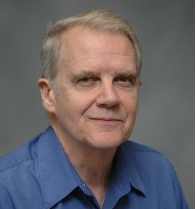 Deputy Director and PI: Neil Sullivan Role of the Deputy Director: Organizing Thrust meetings, overseeing research progress in each Thrust and synergies among Thrusts, and providing scientific guidance to the Thrust leaders. The Deputy Director reports to the Director and the Director brings issues and concerns to the Management Committee. Neil Sullivan carries out nuclear magnetic resonance (NMR) studies of solids at low temperatures (down to millikelvin temperatures). He has published extensively on molecular glasses, quadrupolar glasses, and quantum solids. As part of the Center, he plans to use NMR-stimulated echo techniques to explore memory effects and spin-glass behavior associated with the magneto-electric properties of organic quantum magnets.
Deputy Director and PI: Neil Sullivan Role of the Deputy Director: Organizing Thrust meetings, overseeing research progress in each Thrust and synergies among Thrusts, and providing scientific guidance to the Thrust leaders. The Deputy Director reports to the Director and the Director brings issues and concerns to the Management Committee. Neil Sullivan carries out nuclear magnetic resonance (NMR) studies of solids at low temperatures (down to millikelvin temperatures). He has published extensively on molecular glasses, quadrupolar glasses, and quantum solids. As part of the Center, he plans to use NMR-stimulated echo techniques to explore memory effects and spin-glass behavior associated with the magneto-electric properties of organic quantum magnets.
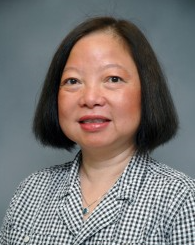 Director of Science: Hai-Ping Cheng Role of the Science Director: Prioritizing scientific projects and advising the Director on directions pursued are the chief roles of the Scientific Director. She oversees and assesses collaboration and synergy among theoretical, computational, and experimental efforts.
Director of Science: Hai-Ping Cheng Role of the Science Director: Prioritizing scientific projects and advising the Director on directions pursued are the chief roles of the Scientific Director. She oversees and assesses collaboration and synergy among theoretical, computational, and experimental efforts.
Research Coordinator: Will manage M2QM daily operation, enforcing deadlines of reports, and checking annual reports to ensure that the component reports from each Thrust Leader comply with DOE requirements and are turned in by internal deadlines to the Director.
Management Committee
Garnet Chan, Hai-Ping Cheng, George Christou, Steve Hill, Vivien Zapf, and Xiaoguang Zhang will constitute the Management Committee, defined as having strategic responsibilities with respect to the following tasks:
1. Ensure all Center-related publications have proper acknowledgments. K. Rivera will distribute official forms for acknowledgments
2. Monitor collaborations with other groups and individuals
a. Samples from other groups
b. Samples to other groups
c. Theory – experiment information exchange
3. Periodically (three times per year) check and assess the progress of each Thrust and make recommendations to the Director for rebalancing of resources.
4.Monitor acknowledgment in manuscripts to satisfy EFRC acknowledgement criteria is properly acknowledged that that we avoid potential disputes with other programs.
5. Make rules and policies for data and software sharing and enforce rules.
Thrust Leaders
The research program of the Center is arranged by teams of expertise and scientific focus called “Thrusts.” Thrust membership and Thrust leadership are determined by the Director in consultation with the Management Committee and Deputy Director. Each thrust leader is expected to maintain the scientific coherence and vision of the team she or he leads, to be ready on short notice to report the status of the team’s work, and to contribute substantially to DOE reporting requirements on the scientific and management aspects of the Center relevant to her/his thrust.
 T1 Lead: Vivien Zapf is the leader of investigating new experimental routes to magnetoelectric coupling in molecular materials. Coupling of magnetism and ferroelectric, piezoelectric or dielectric properties can be enhanced in molecule-based compounds due to the flexibility of the lattice. Besides exchange-coupled order, spin state transitions and quantum tunneling of spin states in single molecule magnets are routes to magnetic functionality in these compounds. She will perform measurements of magnetic and electric properties at low and high magnetic fields up to 100 Tesla.
T1 Lead: Vivien Zapf is the leader of investigating new experimental routes to magnetoelectric coupling in molecular materials. Coupling of magnetism and ferroelectric, piezoelectric or dielectric properties can be enhanced in molecule-based compounds due to the flexibility of the lattice. Besides exchange-coupled order, spin state transitions and quantum tunneling of spin states in single molecule magnets are routes to magnetic functionality in these compounds. She will perform measurements of magnetic and electric properties at low and high magnetic fields up to 100 Tesla.
 T2 Lead: Stephen Hill is an experimental condensed matter physicist with over 25 years of experience performing microwave and far-infrared magneto-optical spectroscopy in high magnetic fields, spanning the range from 0.3 to 200 cm 1 (9 GHz to 6 THz), using a wide array of measurement techniques [conductivity, Electron Paramagnetic Resonance (EPR), Ferromagnetic resonance, etc.]. Research interests include fundamental studies of quantum phenomena in molecular magnets (e.g., single-molecule magnets and molecular spin qubits) and correlated electron systems (quantum magnets and superconductors); structure-property relationships in a wide variety of polynuclear transition metal complexes; and the development of high-field EPR methodology. Hill currently serves as Director of the EPR user program at the National High Magnetic Field Laboratory, which is a leading international center for spectroscopic studies of quantum molecular magnets. The Hill group will therefore lead efforts to spectroscopically characterize new molecular materials developed through the EFRC, thus providing access to both static (spin Hamiltonian) and dynamical (spin-lattice and spin-spin relaxation times) parameters. The information obtained will be used to benchmark theoretical studies, to guide the synthetic effort, and to determine optimum molecular targets for device development.
T2 Lead: Stephen Hill is an experimental condensed matter physicist with over 25 years of experience performing microwave and far-infrared magneto-optical spectroscopy in high magnetic fields, spanning the range from 0.3 to 200 cm 1 (9 GHz to 6 THz), using a wide array of measurement techniques [conductivity, Electron Paramagnetic Resonance (EPR), Ferromagnetic resonance, etc.]. Research interests include fundamental studies of quantum phenomena in molecular magnets (e.g., single-molecule magnets and molecular spin qubits) and correlated electron systems (quantum magnets and superconductors); structure-property relationships in a wide variety of polynuclear transition metal complexes; and the development of high-field EPR methodology. Hill currently serves as Director of the EPR user program at the National High Magnetic Field Laboratory, which is a leading international center for spectroscopic studies of quantum molecular magnets. The Hill group will therefore lead efforts to spectroscopically characterize new molecular materials developed through the EFRC, thus providing access to both static (spin Hamiltonian) and dynamical (spin-lattice and spin-spin relaxation times) parameters. The information obtained will be used to benchmark theoretical studies, to guide the synthetic effort, and to determine optimum molecular targets for device development.
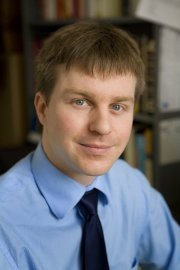 T3 Lead: Richard Hennig will lead the effort of using quantum calculation for electron transport properties, and electron-phonon coupling. Interaction between molecules and semiconductor substrates in junctions will be modeled by a combined DFT and mesoscopic approach, including the computation of the height and width of the Schottky barrier in the presence of magnetic
T3 Lead: Richard Hennig will lead the effort of using quantum calculation for electron transport properties, and electron-phonon coupling. Interaction between molecules and semiconductor substrates in junctions will be modeled by a combined DFT and mesoscopic approach, including the computation of the height and width of the Schottky barrier in the presence of magnetic
Senior Investigators
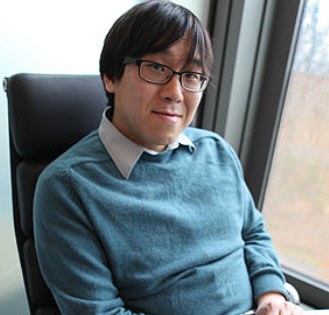 Garnet Chan will play the following roles with M2QM: 1), Determination of parameters for spin Hamiltonians in molecules and crystalline materials, for small molecules using DMRG+PT2, for larger molecules using unrestricted or GSO CC, and for extended materials using unrestricted or GSO CC with PBC. The actual fitting procedure will be the density matrix downfolding technique of Changlani. 2), Ab initio simulation of excited states in small molecular magnets (e.g. by DMRG).
Garnet Chan will play the following roles with M2QM: 1), Determination of parameters for spin Hamiltonians in molecules and crystalline materials, for small molecules using DMRG+PT2, for larger molecules using unrestricted or GSO CC, and for extended materials using unrestricted or GSO CC with PBC. The actual fitting procedure will be the density matrix downfolding technique of Changlani. 2), Ab initio simulation of excited states in small molecular magnets (e.g. by DMRG).
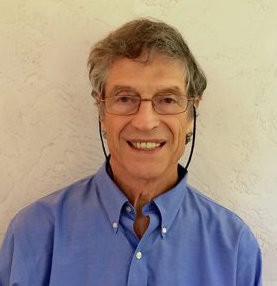 Arthur Hebard contributes to M2QM in the design, fabrication, characterization and understanding through collaborative team efforts the variety of quantum effects expected when solution-derived molecular magnets (MMs) are absorbed onto a wide variety of substrates or incorporated into heterogeneous junctions. Materials under consideration include GaAs, strontium titanate, graphene, exfoliated van der Waals crystals and crystalline MMs. Characterization techniques include magnetotransport, Hall effect, magnetocapacitance, tunneling, SQUID magnetization, electric polarization and transport in Schottky barriers.
Arthur Hebard contributes to M2QM in the design, fabrication, characterization and understanding through collaborative team efforts the variety of quantum effects expected when solution-derived molecular magnets (MMs) are absorbed onto a wide variety of substrates or incorporated into heterogeneous junctions. Materials under consideration include GaAs, strontium titanate, graphene, exfoliated van der Waals crystals and crystalline MMs. Characterization techniques include magnetotransport, Hall effect, magnetocapacitance, tunneling, SQUID magnetization, electric polarization and transport in Schottky barriers.
 Professor Mark R. Pederson is a computational chemical physicist with decades of experience in the density-functional-based calculation of properties of molecule magnets. His role in the M2QM EFRC is to use his experience and computational tools for describing global and ion-specific magnetic anisotropy effects. With this experience and collaborations with experimental teams, he works with M2QM to improve models for understanding coupling in molecular magnets. The overriding goal of this role is to collaboratively determine rigorous improvements of electronic-structure-based descriptions of Heisenberg-like and Hubbard Hamiltonians and to expand the regime of reliability and degree of precision of the resulting theoretical framework to predictively determine operational environments for molecular magnetic qubits. Dr. Pederson advises a postdoctoral and graduate student, supported by the EFRC, who perform DFT-calculations on molecular magnets, with emphasis on understanding multiferrioic behavior and spin-vibron coupling, and interacts with the theoretical and experimental thrusts in the program.
Professor Mark R. Pederson is a computational chemical physicist with decades of experience in the density-functional-based calculation of properties of molecule magnets. His role in the M2QM EFRC is to use his experience and computational tools for describing global and ion-specific magnetic anisotropy effects. With this experience and collaborations with experimental teams, he works with M2QM to improve models for understanding coupling in molecular magnets. The overriding goal of this role is to collaboratively determine rigorous improvements of electronic-structure-based descriptions of Heisenberg-like and Hubbard Hamiltonians and to expand the regime of reliability and degree of precision of the resulting theoretical framework to predictively determine operational environments for molecular magnetic qubits. Dr. Pederson advises a postdoctoral and graduate student, supported by the EFRC, who perform DFT-calculations on molecular magnets, with emphasis on understanding multiferrioic behavior and spin-vibron coupling, and interacts with the theoretical and experimental thrusts in the program.
Chunjing Jia utilizes ab initio density functional theory, many-body simulations for correlation effects, as well as cutting-edge machine-learning techniques to understand, predict, and design magnetic molecules. Her research focuses on the magnetic properties of molecules with single and double spin centers, as well as their interactions with substrates.
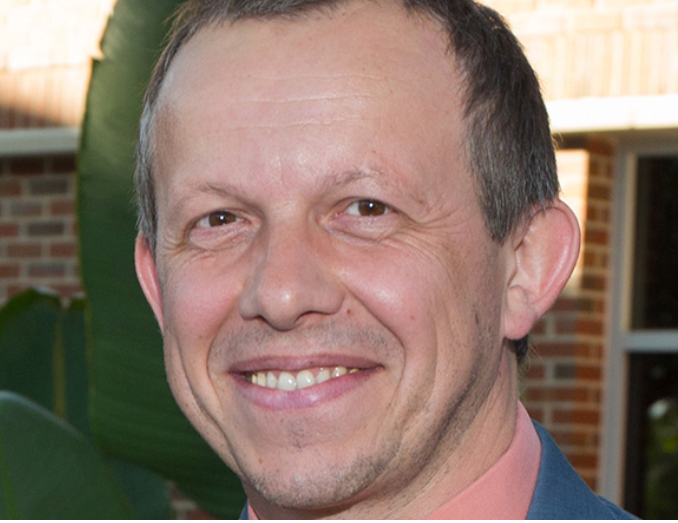 Michael Shatruk provides expertise in the design, synthesis, crystal structure determination, and magnetic characterization of transition metal complexes. One group of molecular materials pursued are stimuli-responsive complexes whose spin state is sensitive to changes in temperature, light irradiation, pressure, and magnetic or electric field. The other objective is the study of potential molecular qubits, both as individual spin centers and as dimers or trimers connected through a switchable linker. An outgrowth of both these efforts is functionalization of such molecules to improve their volatility and allow deposition on a variety of inorganic substrates.
Michael Shatruk provides expertise in the design, synthesis, crystal structure determination, and magnetic characterization of transition metal complexes. One group of molecular materials pursued are stimuli-responsive complexes whose spin state is sensitive to changes in temperature, light irradiation, pressure, and magnetic or electric field. The other objective is the study of potential molecular qubits, both as individual spin centers and as dimers or trimers connected through a switchable linker. An outgrowth of both these efforts is functionalization of such molecules to improve their volatility and allow deposition on a variety of inorganic substrates.
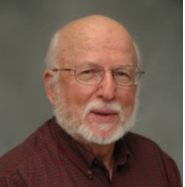 Sam Trickey has three roles in M2QM. First is guiding the development and implementation of software needed for significant improvements in the accuracy and speed of critical calculations. The current emphasis is on all-electron density functional calculations for complex solids and surfaces. This involves major enhancements in the exciting-plus (also known as modified ELK) codes. The value is cross-validation with more common pseudo-potential calculations. The second role is testing and validation of selected density functionals to assure that their spin-state and spin-crossover predictions are reliable. The current emphasis is on determining the significance for M2QM of recently uncovered oddities in the SCAN functional. The third role is to provide support and advice to the Director on university and DOE relationships, practices, and requirements.
Sam Trickey has three roles in M2QM. First is guiding the development and implementation of software needed for significant improvements in the accuracy and speed of critical calculations. The current emphasis is on all-electron density functional calculations for complex solids and surfaces. This involves major enhancements in the exciting-plus (also known as modified ELK) codes. The value is cross-validation with more common pseudo-potential calculations. The second role is testing and validation of selected density functionals to assure that their spin-state and spin-crossover predictions are reliable. The current emphasis is on determining the significance for M2QM of recently uncovered oddities in the SCAN functional. The third role is to provide support and advice to the Director on university and DOE relationships, practices, and requirements.
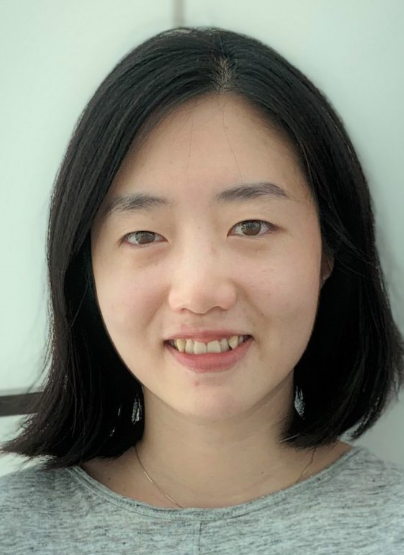 Xiao-Xiao Zhang is a condensed matter experimentalist expert in nanofabrication of 2D materials and optical spectroscopy (cw and ultrafast) of nanomaterials. In particular, her group measures the Raman spectroscopy (phonon interactions), characterizes the magnetization through Magneto-optic Kerr effect (MOKE), and probes the time-resolved spin dynamics in these molecular systems. Another interest is to combine molecular thin films with van der Waals materials and fabricate planar devices.
Xiao-Xiao Zhang is a condensed matter experimentalist expert in nanofabrication of 2D materials and optical spectroscopy (cw and ultrafast) of nanomaterials. In particular, her group measures the Raman spectroscopy (phonon interactions), characterizes the magnetization through Magneto-optic Kerr effect (MOKE), and probes the time-resolved spin dynamics in these molecular systems. Another interest is to combine molecular thin films with van der Waals materials and fabricate planar devices.
Research Scientists
Xing Zhang is a research scientist in Dr. Garnet Chan’s group. His roles with M2QM will be extending the capabilities of coupled cluster theory for treating extended materials with strong electron-phonon couplings.
Shuanglong Liu is a research scientist in Dr. Hai-Ping Cheng’s group. His roles include: 1) Developing computer codes to deal with electron transport with spin-orbit interaction under finite bias and gate voltages; 2) Simulating effects of electrostatic doping on the magnetic anisotropy of molecular magnets on substrates.
Angel Albavera Mata is an assistant scientist in Professor Richard Hennig and Sam Trickey’s research group at the University of Florida. Research topics on the electronic structure of molecular materials and their intermolecular interactions involve the role of the choice of exchange and correlation density functional approximations and Hubbard U corrections, as well as to determine the effect of a gate voltage of substrates on the magnetic states and energetics of molecular magnets.
Post-Doctoral Researchers
Alexander Diodati is a graduate student currently working for Dr. George Christou. He currently serves in working as a synthetic organic and inorganic chemist preparing ligands and small metal-oxo clusters for use in designed S = ½ systems for Electron Paramagnetic Resonance (EPR) and magnetic studies. His main interest is in working with these systems for use as potential qubits in quantum computing and other exotic memory devices.
Fedous Ara is a Post doctoral associate in Stephen Hill’s group in the department of Physics at Florida State University. Her research will be focused on characterizing the spin states of magnetic molecules. As a M2QM collaborator, she will design and carry out advanced high frequency EPR experiments on molecular magnets developed within the M2QM that will be applicable to quantum information technology.
Rizwan Nabi is a postdoctoral research associate at “The Center for Molecular Magnetic Quantum Materials”, University of Florida, USA, under the supervision of Prof. Xiaoguang Zhang. Currently, he is working on spin transitions, optically detected magnetic resonance (ODMR), magnetoelectric couplings, and dynamics in Single-Molecule Magnets (SMMs). He received PhD in Chemistry from the Indian Institute of Technology, Bombay, India, emphasizing Computational Inorganic Chemistry. During my PhD, he extensively explored periodic DFT and ab initio calculations for atomistic, electronic, and magnetic studies of substrate-bound SMMs, like Au(111), MgOAg(100), carbon nanotubes (CNTs), graphene, and graphite. After obtaining PhD, he received “A European Research Council Fellowship” at the Department of Chemistry, the University of Manchester, UK (2020-2023) as a Postdoctoral Fellow in the Chilton group for three (03) years where I performed the spin dynamics of SMMs using solid-state spin-phonon calculations of some of the best-known SMMs including [Dy(Cpttt)2][B(C6F5)4], [Fe(C(SiMe3)3)2]- and [Dy(bbpen)Br] using exact phonon linewidths for the single-phonon (Orbach) and two-phonon (Raman) processes considering the pure crystal structure.
Mainak Pal is a Postdoc in Dr. Hai-Ping Cheng’s group. His interests are 1. topological signature, spin dynamics and decoherence in molecular magnets as possible candidates towards fault tolerant quantum computation and 2. effects of disorder and strain in transport, magnetic and topological properties of high temperature and unconventional superconductors, including cuprates and multiband iron-base ones. http://phys.ufl.edu/~mainak.pal/
Sijin Ren will be modeling properties of magnetic metal clusters in solution using a combination of electronic structure methods and solvation models. This study begins with modeling different spin states of metal clusters in gas phase with Density Functional Theory (DFT), followed by adding an implicit and/or explicit solvation model for simulating bulk solvation.
Pawan Prakash
Nain Pedroza
Dibya Mondal
Nithun Pandit, is a postdoc in George Christou’s group. His research focus is the development of new magnetic molecules based on the structure of the AMnO3 manganites with the perovskite structure.
Eric Fonseca
Volodymyr Turkowski
Huanchen Zhai
Shuy Li
Andrew Cupo
Yu Zhou
Former Postdocs
Zahra Hooshmand
Xuanyuan Jiang’s
Eric Sweitzer
James Wampler
Minseong Lee – Currently staff at Mag Lab LANL
Graduate Students
Johnny Adams is a graduate student in Dr. Sullivan’s research group. My research efforts will focus on using tunnel diode oscillators and other techniques to measure electronic properties of materials. My primary research will be to study the dielectric susceptibilities of materials over a wide range of temperatures.
Johann Alvarez is a graduate student in Professor Zhang’s group. His research focuses on using a variety of optical spectroscopy methods to probe light-matter interactions in 2D materials.
Shubham Bisht is a graduate student working in Dr. Shatruk’s group. His research is devoted to the design, synthesis, and characterization of potential molecular qubits, both as individual spin system and as dimer or trimer connected through a switchable linker.
Andrew Brooks will perform first-principles calculations of electron transport properties to study interactions between magnetic molecules and its environment. Interaction between molecules and semiconductor substrates will be modeled by a combined DFT and mesoscopic approach.
Christian Bunker is a graduate student in Prof. Cheng’s group interested in computational quantum chemistry and quantum computing. His research goals are to become proficient in quantum mechanical simulations such as VASP and investigate the application of dynamical mean field theory (DMFT) to systems of strongly correlated electrons, e.g. the Anderson impurity model.
Wei-Hao Chou is a graduate student in Stephen Hill’s group in the physics department at FSU. Research efforts focus on characterizing magnetic properties of molecule-based systems in the context of single molecule magnets and spin based qubits. As a contributor to M2QM, Jon will spectroscopically determine the characteristics of new molecular materials using electron paramagnetic resonance, with the ultimate goal of assessing applications to quantum information technologies.
Ethan Fisher is a graduate student in the Christou Group and will be making molecules containing two lanthanides as potential two-qubit systems showing quantum clock transitions
Eric Fonseca is a graduate student working with Professor Richard Hennig. He will focus on the interaction of single molecular magnets and substrate interfaces using density functional theory and continuum models. The solvation module VASPsol with the VASP code will enable calculations for the substrates as a function of applied potential. This approach will determine how potentials at surfaces change the electronic and magnetic properties of the adsorbed molecular magnets. He will advance the VASPsol code to enable screening and characterization of favorable molecular magnet-semiconductor substrate interfaces.
Miguel Gakiya-Teruya is a graduate student working in Dr. Shatruk’s group. His research focus on the design, synthesis and characterize potential molecular qubits and molecular materials that can change their spin state by stimuli response (temperature, pressure, light). Also, he is working in modify such molecules to improve their volatility to study on different subtracts.
Austin Hall is a graduate student working with Professor Zhang to apply theoretical methodology for Raman spectroscopy to model IETS measurements to investigate the feasibility of IETS detection of quantum spin states of magnetic molecules.
Eduardo Hernandez Requejo is a graduate student working in Dr. Shatruk’s group. His research focuses on the design, synthesis and characterization of lanthanide complexes that can serve as potential molecular spin qubits. In addition to this, he is investigating functionalization of molecular magnets to make them appropriate for deposition on diverse substrates.
Fhokrul Islam is an assistant professor of research in the department of physics at the University of Texas at El Paso. He works in close collaboration with Prof Mark Pederson and his research group. His research is focused on understanding electronic, magnetic and transport properties of different types of magnetic nenostructures such as molecular magnet, magnetic semiconductors and magnetic topological materials using first-principles density functional theory, phenomenological tight-binding methods and analytical modeling.
Rahul Kumar is a graduate student in Dr. George Christou’s group. His research project focuses on the syntheses of molecular nanoparticles of metal-oxides through high-temperature techniques.
Marc Lewkowitz is a graduate student working in Dr. Sullivan’s group. His research focuses on studying the electric properties of materials at various temperatures. The current goal is to create an apparatus to measure the electric susceptibility of a sample using a tunnel diode in an oscillating circuit.
Guanzhi Li is a graduate student of Dr. Zhang. His research focuses on the first principle Raman intensity calculation of single molecule magnets. The goal is to identify spin quantum state of single molecule magnets by analyzing resonant Raman spectra.
Haechan Park is a graduate student in Prof. Cheng’s research group. My current center project is about how phonon scattering in the graphene quantum dot can affect the spin-state dynamics of excited electrons as they relax, described by Reduced Density Matrix (RDM) and Linear Response Time Dependent Density Functional Theory (LR-TDDFT).
Linqing Peng is a graduate student working with Prof. Garnet Chan. She derives spin model Hamiltonian from ab initio calculations for the Holmium complex exhibiting quantum clock transitions to study the influence of spin-phonon dynamics on spin decoherence.
William Perry is a graduate student of Dr. Zhang. He will apply Bayesian Optimization techniques towards searches for ligands which modify the properties of single-molecule magnets, such as a spin-lattice coupling and ferromagnetic-antiferromagnetic coupling. His work is focused on enabling efficient DFT-based discovery of novel ligand-core combinations which are not suggested by currently studied molecules. The benefits of this technique are most apparent in problems where the computational cost of the calculations is a limiting factor to the number of candidate ligand-core combinations that can be explored.
Robert Stewart is a graduate student working with the Hill group on characterizing materials using high-field electron paramagnetic resonance (EPR) techniques. Research interests include identifying molecular materials that are the most suitable for spin transport devices and molecular spin qubits.
Xiaoliang Zhang is a graduate student of Dr. Zhang. She is working on the impact of spin-phonon interaction on decoherence time of spin qubit. The research is on the quantum dot and NV center in different materials. The phonon dispersion will be get from DFT calculation and Phonopy calculation.
Chin-Ching Fan
Manoj Subramanya
Divya Kumar
Baily Charlotte
Linqung Zhang
Adrian Bahri
Undergraduates
Sean Paul Florez
Screeram Vasidevan